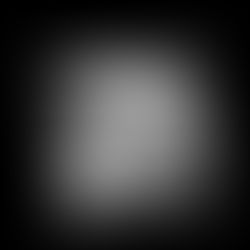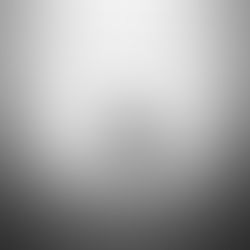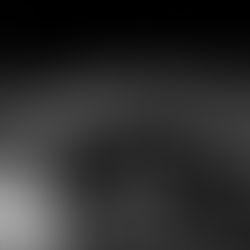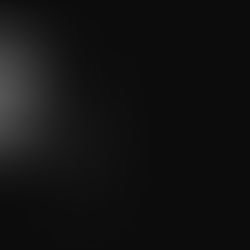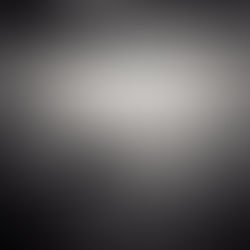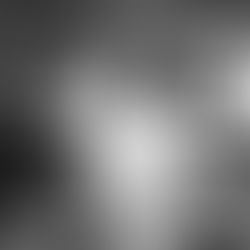THE SHÖNBRUNN MIRACLE
- Mar 25, 2019
- 6 min read
Updated: Jul 14, 2023
By Kale McDunitt
May 29th, 2022
Austria's Schönbrunn Zoo, the world's oldest continuously operating zoo, went public today with a secret they knew was sure to ruffle feathers far beyond their sanctuary in Vienna. Today biologists around the globe learned the details behind what had before now been merely a rumour, one initially labelled by many a hoax.
The ornithology lab at Schönbrunn has been responsible for a pair of rescued white storks (Ciconia ciconia) for almost two decades. Both birds were discovered around the same time and with similar wing injuries. Both were brought to the zoo for rehabilitation and with great care the animals healed quickly, though neither would be able to fly ever again. After a successful appeal for donations – including the public auction of naming rights for the birds, now known as Matilda and Storky McStorkface – and subsequent expansion of their aviary, the zoo was able build a permanent home for the birds.
Though, more than rescuing and housing these birds, the team at Schönbrunn hoped the pair would become a valuable part of Europe's White Stork Breeding and Reintroduction Program. Captive breeding programs of all sorts across the globe have notoriously low success rates and Schönbrunn Zoo experienced all the usual difficulties. Despite their best efforts, the team struggled even to get the birds to acknowledge to one another. After years of persistent encouragement by staff, but not wanting to take any extraordinary measures with these already-traumatized animals, the storks were eventually left to what appeared to be a mutually agreed upon independence. After eighteen years of disinterest, the story of these two took a turn last Fall when their keepers witnessed Storky feeding Matilda. Further bonding through the Winter eventually lead zoo staff to introduce nesting materials into their enclosure, which soon resulted in their co-construction of a remarkable nest. White stork nests are typically built with a diameter of one to two metres but Storky and Matilda put all of these to shame with a nest nearly twice this size. Then, to her caretakers surprise and delight, only days after completing the nest Matilda laid a single egg. Though white storks often have a clutch of four eggs, this first attempt was still being called a miracle for having arrived many years after it was assumed one or both birds were either infertile, disinterested in the opposite sex, or turned off by one another's physical injuries. Further excitement came when both storks proved to be capable partners: diligently tending to the upkeep of the nest and taking turns incubating and standing guard over their partner and egg. Within weeks, however, delight turned to alarm with the much-anticipated hatching.
The multinational audience watching the egg on Schönbrunn's stork-cam was at its peak when the feed went dark, causing many onlookers to go to social media and post theories about what happened. Some suggested the baby was accidentally crushed by a startled parent while others joked about a different species emerging from the egg. More seriously, the blackout rekindled a longstanding suspicion that the egg was a fake, planted to bolster the profile of the zoo's aviary and solicit new donations for their failed breeding program. By far the most popular conspiracy was one combining all of the above: linking a Schönbrunn funder to a Swiss genetics lab engaged in the reanimation of extinct DNA, and then claiming the birds were surrogates sitting on some kind of dinosaur hybrid the world was never meant to see. This accounting, which first appeared on Reddit, inspired a series of viral YouTube videos mixing clips from the Jurassic Park movies with shots of Schönbrunn Zoo and other European landmarks. Little did these conspiracy theorists know, these wild speculations were not creative enough.
Unbeknownst to the public, just one day after the feed was cut on the stork-cam a select team of researchers from Belgium, Japan, and the United States arrived in Austria at the request of Schönbrunn administrators and officials from European Union Biosecurity Regulators. And this morning, before a sea of cameras and with this international team in the wings, the zoo's chief ornithologist, Dr Anna Hühnerfleisch, explained to the world that the impossible was now possible. In a small room within the zoo's education building Dr Hühnerfleisch briefly walked the invited journalists through a general introduction to storks and then got into some specifics about white storks. With a live feed of the parents on a screen behind her, the doctor gave an overview of white stork physiology and breeding habits as well as their natural habitat and migration patterns. After explaining how white storks are long-distance migrants, commonly wintering in tropical regions of Sub-Saharan Africa, she shared with the assembled audience how there was no understanding of bird migration prior to nineteenth century. Dr Hühnerfleisch acknowledged that folks have always known many creatures disappear seasonally but that common belief, even among prominent zoologist of the time, held that flocks of swallows, turtledoves, cranes, and storks likely hibernated at the bottom of the sea, transmuted into rodents, or even soared to the moon in order to survive the winter. These theories were overturned, she explained, with the discovery of the first pfeilstorch, or spear-stork, shot on the Bothmer Estate near Mecklenburg, in north Germany, on May 21, 1822. This original specimen, now found among the Zoological Collection at the University of Rostock, was shown to be a white stork, the same species as new parents Storky and Matilda, and the spear running through its middle eventually traced to Central Africa. It seemed the bird was impaled by a hunter somewhere near the equator and then returned to Central Europe so skewered. Though there have been dozens of similar pfeilstorches recorded since, it was the discovery of this first specimen, the Rostocker Pfeilstorch, which lead to further investigations that overturned earlier explanations and give us our modern understanding of bird migration.
Following these explanations, Hanna Kuningg, a zoo administrator, took the stage and revealed to the world the original video of the hatchling emerging from its egg. What the video showed was a little, pink, featherless stork cracking through its egg as expected. Catching everyone off guard, and what resulted in the feed being cut, is the final moments when the bird clearly emerges from the egg with a tiny wooden spear already in its neck. What's plain for all to see was then confirmed by Dr Hühnerfleisch and the attendant team of biologists who shared additional images from a more recent CT scan as well as the results of their physical examination of the bird. The zoo also shared that the eggshell itself and all of the video from the preceding month was being made available to anyone wishing to examine them for signs of external interference. The presenters then took questions while live video of the bird streamed, confirming that it is still alive, in good health, and growing normally.
Almost immediately the video was being shared on social media. And it's not just biologist that are abuzz but physicists and theorists, philosophers and theologians too. What seems certain is that today's news is far more disruptive than the Rostocker Pfeilstorch. Not only did the birth occur on the two hundredth anniversary of the discovery of the Rostocker Pfeilstorch, which has some calling the event "the Schonbrunn Miracle" and labelling the bird sacred, but even those less mystically inclined are suggesting this hatchling has shattered everything we believed we knew – not only about the intercontinental travel patterns of our avian friends but the very nature of being, of causality, of space and time. Of course our understanding of migration still holds: today we don't just track birds with tags as has been done since the nineteenth century but also track their every movement using GPS locators and even by flying with them along their migratory routes in ulta-light aircraft. However, it's being suggested this baby bird, some are calling Pfeil, is confirmation of the complex relationship between mind and matter: that the material world is at bottom a construct only made solid and definite once engaged by a mind; that the world measured and predicted by physics is fundamentally one of human perception and not ultimate cosmic reality. Other commentators claim this bird’s existence proves the chicken, so to speak, does indeed come before the egg: that white stork migration to Africa did not precede but resulted from the discovery of the Rostocker Pfeilstorch and the theory that later emerged and that zoologists elaborated the transcontinental migration of white storks into being through their sense-making of the observed physical phenomena. Obviously we still have much to learn and the implications do appear staggering.
Of course, all of this comes while the world is still reeling from its last eruption of consternation. It was only last month that the James Webb Space Telescope, NASA's brand new Hubble replacement, imaged what appears to be a teapot encircling Jupiter's largest moon, Ganymede. Since then, plans have formalized for a Chinese satellite, already on its way to Jupiter, to rendezvous with the alleged teapot in November of next year to confirm the teapot’s existence, send back higher resolution photographs, and make the first accurate measurements of its composition.
Some are calling these coincident events a crushing blow to science, declaring that miracles do, indeed, happen. Prominent members of the scientific community have been quick to suggest that observation and measurement are the very tools of science and that these new observations, though remarkable and as yet unexplained, only update our vision of the universe and our place within it. Armchair sociologist and MySpace sensation C. Norman Short has been quoted on two microbogging sites and one substandard YouTube channel saying, "Turns out that the universe is more mysterious and wonderful than we would allow it to be."




































